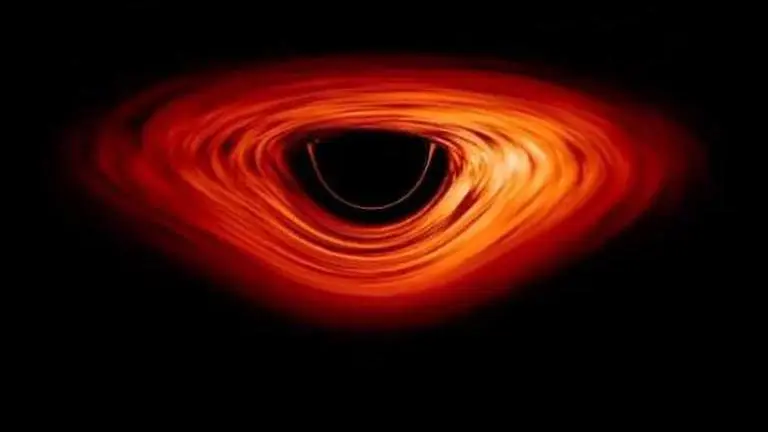Updated 3 May 2022 at 18:32 IST
NASA shares stunning black hole visuals as it celebrates 'black hole week'; Watch video
NASA shared a YouTube video featuring 22 different black hole systems in our milky way galaxy, and its nearest neighbour, the Large Magellanic Cloud.
- Science News
- 2 min read

As NASA celebrates black hole week, the agency has shared a brilliant visual of these massive entities that are taking the internet by storm. Black holes, which are born after the death of massive stars, have remained a topic of interest for the astronomical community and these visuals shared by NASA show why it is so. A video shared by NASA Goddard on YouTube features 22 different black hole systems in our milky way galaxy, and its nearest neighbour, the Large Magellanic Cloud. Check out the video below.
According to NASA Goddard, this visualisation is a compilation of 22 X-ray binary systems that have a confirmed black hole at their galactic center. What's more, is that each of these systems has been sped up 22,000 times in their orbit. Besides, each system with different colour represents different temperatures. NASA says that the colours range from blue-white to reddish and shows temperature ranging from 5 times hotter to 45% cooler than our Sun.
The MAXI J1659, for example, has the fastest known orbit of an accreting black hole, meaning one which is growing in size gradually. It is located about 29,000 light-years from Earth and has a black hole with mass five times greater than the sun. Another system called the A0620-00 is the closest known accreting black hole system and is located about 3,300 light-years from our planet. Besides, it houses a black hole that is about 6.6 times more massive than the sun. The visual also features systems such as the Cygnus X-1 and the GRS 1915, each of which is orbiting at massive speeds and have an overwhelmingly massive black hole at their center.
NASA's another treat to astronomy enthusiasts
The agency shared another stunning visual on Instagram which shows a supermassive black hole warping the fabric of space-time. NASA revealed that the visual is a simulation that was created after the team using the Event Horizon Telescope (EHT) released the first direct picture of a black hole in 2019. "The black hole’s extreme gravity alters the paths of light coming from different parts of the disk, making rings of matter visible above and below", NASA wrote in the captions.
Advertisement
Published By : Harsh Vardhan
Published On: 3 May 2022 at 18:32 IST
